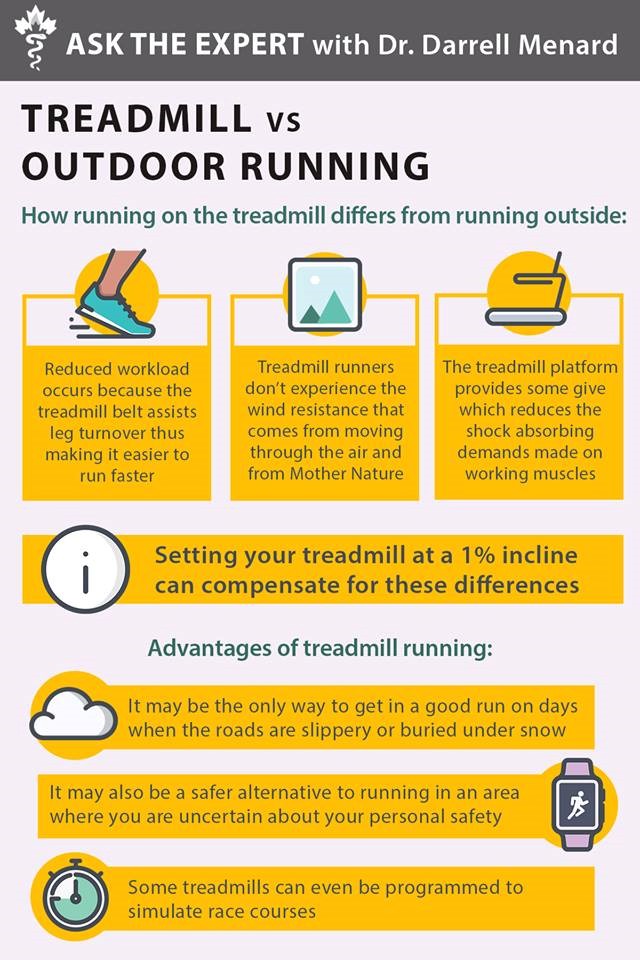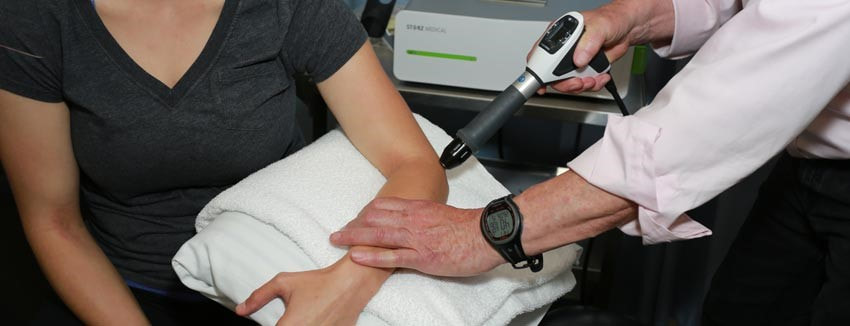|
Tricia Hayton, Registered Physiotherapist As the days grow longer and warmer, many people switch from running on a treadmill to running outside. I have been asked many times, "How does this change my training?" "What are the differences between treadmill and outdoor running?". The pictogram below was featured on the CASEM website and shows some of the differences: To sum it up, it is easier to run on a treadmill physiologically. Be prepared to decrease the intensity of your run slightly when you head outdoors. This can be done by either shortening the run slightly or moving just a little slower. Your body will adapt to the changes, but you need to give it a little time.
Remember, in the winter when you move back indoors and onto the treadmill, adjusting the incline of the treadmill by 1% will negate these changes and you will run smoothly in the future.
0 Comments
Tricia Hayton, Registered Physiotherapist  The long weekend is coming and for some of us that means field lacrosse provincials, but for many more it is the weekend of planting, gardening, and preparing our backyards for the warm summer weekends to come. And although the thought of warm days spent outside tending to our plants is relaxing and refreshing after a long winter, we need to remember that gardening is physical activity and there are some hints that can make it less stressful on the body. Here is what I recommend.
So, get out and enjoy the nice weather that is promised in the days to come. But make sure to follow these top five hints to prevent injury and pain. Tricia Hayton, Registered Physiotherapist & Clinical Director There have been big changes happening at Physio Sport Med. Our regular clients will notice that there have been many new faces in the clinic over the last few weeks. We welcome Mark, Registered Physiotherapist, and Ashley, Registered Massage Therapist, to our team to get you back to the lifestyle you love. To learn more about them, please see our bio page. With the addition of these practitioners, we are very happy to offer extended hours and more convenient times, while maintaining the high-quality standards that our clients have learned to expect. You can see our practitioner hours here. We also welcome Weronika and Stephanie who will be taking care of the front office matters once Danielle leaves for maternity leave in June. We would like to thank everyone for their patience as we get our new front office staff ready to take over the helm. Weronika will be taking over as office manager and will be ready to answer any billing and insurance questions that you may have. Stephanie will be helping with early mornings and evenings, which means better care for you without interruptions.
The other major change that our patients may have noticed is that I am missing…at least a lot more often than I used to be. I have reduced my hours to part time at the clinic as I have accepted a position to work with Cycling Canada and the Canadian Sport Institute with the National Sprint and Endurance Track Team. It is a chance of a lifetime and I am happy to use my skills and expertise to help these elite athletes achieve their goal of competing in Tokyo 2020 and maybe even stand on the podium for Canada. Although I was armed with some previous cycling experience – both road and track, the learning curve is steep, and I am enjoying every minute of it. I will be splitting my time equally between the Velodrome and Physio Sport Med. This will leave me with plenty of time to “captain” the ship, make sure that our standards are met, and continue to treat you. We’re excited to be growing our team and we can’t thank you enough for your ongoing support! Tricia Hayton, Registered Physiotherapist It is that time of year again. Time to take your closed shoes and boots and stick them in a closet. Ladies, it is time to take your socks and push them to the back of the drawer. Time to pamper yourselves with pedicures. As the weather gets warmer, the structure and form of our footwear will often change from supportive closed shoes and running shoes to sandals and slip-ons. With this change, healthcare professionals often see an increase in plantar fasciitis.
First, what is plantar fasciitis? The plantar fascia is a long, triangular layer of connective tissue that runs from the mid point in your heel to the base of your toes. Its job is to support your arch and help create power when you push off in walking or running. This tissue will often start to fray at the insertion point creating micro tears. This damage to the tissue is called plantar fasciitis. Symptoms often include arch pain with walking and tired, aching feet. There is also a sharp pain with the first step in the morning and for some, the first few steps after sitting for a long time. Treatment for this disorder can be frustrating and long. Orthotics or taping can be helpful for some. Most find that stretching their calf muscle before standing in the morning can relieve the sharpest pain, but not all of the pain. Traditional physiotherapy treatment of Ultrasound, massage, mobilization, and strengthening of the intrinsic (small muscle) of the foot can also reduce symptoms. However, Shockwave therapy is often the solution for many. Research shows that 94% of people that did not respond to previous treatment have a significant reduction in pain and an increase in function with 2-3 treatments of Shockwave. Shockwave is a pulsed sound wave that creates blood flow and regeneration of the plantar fascia tissue. Shockwave is applied through the skin via a hand-held device. And although it can be tender during treatment, most clients state that this is temporary and worth it. If you would like to know more about Shockwave, please contact any one of the associates at the clinic and we will tell you if it is right for you. |
Physio Sport Med
Serving all of Oakville in the Uptown / Dundas-Trafalgar Core. Archives
May 2025
Categories |
- Info
- Book Now
-
Team
-
How We Treat
- Sport Medicine Consultation
- Manual - Exercise Physio
- Sport Physiotherapy
- Tissue Injections
- Acupuncture
- Vestibular Physiotherapy
- Osteopathy
- Chiropractic Care
- Concussion Program
- Shockwave Therapy
- Female Pelvic Health
- Male Pelvic Health
- Registered Massage Therapy
- Nutrition Consultation
- On-Field Therapy Coverage
- Custom Orthotics
-
What We Treat
- Sports Injuries
- Low Back Pain
- Osteoarthritis
- Motor Vehicle Accident
- Sprains
- Muscle Strains
- Concussion
- Rotator Cuff
- Tendonitis
- Neck Pain and Headaches
- Hip Pain
- Shoulder Pain
- Elbow, Wrist and Hand Pain
- Foot and Ankle Pain
- Post Surgical Rehabilitation
- Gait and Balance Disorders
- Knee Injuries
- Pelvic Floor Conditions
- Blog





 RSS Feed
RSS Feed